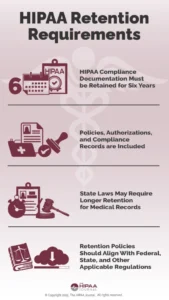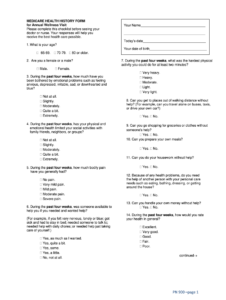Navigating the world of healthcare compliance can feel like traversing a dense forest, especially when it comes to HIPAA. The Health Insurance Portability and Accountability Act (HIPAA) sets the standard for protecting sensitive patient data. But just knowing about HIPAA isn’t enough. You need to demonstrate that you’re taking the necessary steps to safeguard Protected Health Information (PHI). That’s where robust documentation comes into play. A well-crafted HIPAA security documentation template can be your roadmap to compliance, ensuring you have all your bases covered.
Think of a HIPAA security documentation template as a comprehensive checklist and guidebook all rolled into one. It helps you identify potential security risks, implement appropriate safeguards, and prove to regulators that you’re serious about data protection. It’s not just about avoiding fines; it’s about building trust with your patients and maintaining the integrity of your practice or organization. Without proper documentation, it’s difficult to show that you’ve conducted a thorough risk assessment, implemented security policies, and trained your staff effectively.
This article will break down why a HIPAA security documentation template is so crucial, what key elements it should include, and how to effectively implement it within your organization. We’ll explore the essential components that will help you create a strong foundation for HIPAA compliance and provide actionable insights to simplify the process. The goal is to demystify the process and empower you to confidently navigate the complex landscape of HIPAA security.
Why You Absolutely Need a Comprehensive HIPAA Security Documentation Template
The HIPAA Security Rule mandates administrative, physical, and technical safeguards to protect electronic Protected Health Information (ePHI). A comprehensive HIPAA security documentation template is essential for demonstrating your compliance with these requirements. Without proper documentation, you’re essentially operating in the dark, unable to prove that you’ve taken the necessary steps to secure patient data. This not only puts you at risk of hefty fines but also damages your reputation and erodes patient trust.
Consider the following scenario: a security breach occurs at your organization. If you lack proper documentation, you’ll struggle to demonstrate that you had reasonable security measures in place. Regulators will likely assume you were negligent, leading to significant penalties. However, with a detailed HIPAA security documentation template, you can showcase your proactive efforts to identify risks, implement safeguards, and train your staff. This evidence can significantly mitigate the severity of any penalties and demonstrate your commitment to data security.
Furthermore, a well-maintained HIPAA security documentation template isn’t just about avoiding fines; it’s about improving your overall security posture. By regularly reviewing and updating your documentation, you can identify gaps in your security practices and implement necessary improvements. This proactive approach helps you stay ahead of emerging threats and ensure that your security measures remain effective over time. Think of it as a living document that evolves with your organization’s needs and the ever-changing threat landscape.
A good HIPAA security documentation template will outline all required policies and procedures. This includes things like access controls, data backup and recovery plans, security incident response plans, and employee training programs. Each of these elements requires thorough documentation to demonstrate compliance. For example, access controls should be documented to show who has access to ePHI, how access is granted, and how access is revoked. Data backup and recovery plans should detail how data is backed up, where it’s stored, and how it can be restored in the event of a disaster.
Finally, remember that HIPAA compliance is an ongoing process, not a one-time event. A HIPAA security documentation template provides a framework for continuous improvement. By regularly reviewing and updating your documentation, you can ensure that your security practices remain aligned with HIPAA requirements and industry best practices. This ongoing effort demonstrates your commitment to protecting patient data and fosters a culture of security within your organization.
Key Components of an Effective HIPAA Security Documentation Template
An effective HIPAA security documentation template should include several key components. First and foremost, it should incorporate a thorough risk assessment. This assessment should identify potential vulnerabilities in your systems and processes that could compromise ePHI. It should also evaluate the likelihood and impact of each vulnerability to prioritize remediation efforts. The documentation should clearly outline the methodology used for the risk assessment, the findings, and the steps taken to address identified risks.
Second, the template should include detailed policies and procedures for each of the HIPAA Security Rule’s administrative, physical, and technical safeguards. This includes policies for access control, security awareness training, incident response, data backup and recovery, and physical security of facilities and equipment. Each policy should be clearly written, easily understood, and regularly reviewed and updated. The documentation should also include evidence that these policies are being implemented and followed, such as training records, audit logs, and incident reports.
Essential Elements to Include in Your HIPAA Security Documentation
Creating a robust HIPAA security documentation template requires careful consideration of the essential elements that demonstrate compliance with the HIPAA Security Rule. These elements encompass administrative, physical, and technical safeguards, each requiring specific documentation to showcase your organization’s commitment to protecting ePHI. Let’s delve into some key components you should incorporate into your template.
First, you need a comprehensive risk assessment. This is the foundation of your security strategy. Document the methodology used to identify vulnerabilities, the potential impact of those vulnerabilities, and the likelihood of them being exploited. Detail the steps taken to mitigate these risks, including the implementation of security controls and policies. Regular risk assessments, documented clearly, demonstrate an ongoing commitment to identifying and addressing potential threats.
Next, establish clear policies and procedures. These documents should outline how your organization handles ePHI, including access controls, data encryption, and incident response. Ensure these policies are readily accessible to all employees and that they are regularly reviewed and updated. Document the training provided to employees on these policies and procedures, including the frequency of training and the topics covered. This demonstrates that your staff is aware of their responsibilities and understands how to protect ePHI.
Another crucial element is a robust incident response plan. This plan should outline the steps to be taken in the event of a security breach or data leak. Include procedures for identifying, containing, and recovering from incidents, as well as notification protocols for affected individuals and regulatory agencies. Regularly test the incident response plan and document the results of these tests. This ensures that your organization is prepared to respond effectively to security incidents.
Furthermore, document your business associate agreements (BAAs). These agreements outline the responsibilities of your business associates in protecting ePHI. Ensure that all business associates are contractually obligated to comply with HIPAA regulations and that you have a process for monitoring their compliance. Regularly review and update these agreements to reflect changes in regulations or your business relationships.
Finally, remember the importance of audit logs. Implement audit logs to track access to ePHI and monitor system activity. Regularly review these logs for suspicious activity and document any actions taken in response. Audit logs provide valuable evidence of your organization’s security practices and can help identify potential security breaches. These logs show how diligent you are in monitoring and protecting patient data.
Even with the best template, consistent effort is needed. Regular reviews, updates, and employee training sessions are all crucial components of maintaining a strong security posture. By prioritizing documentation, you demonstrate a commitment to protecting patient privacy and safeguarding sensitive information.
With a detailed plan, you’ll be well-equipped to handle the demands of HIPAA and contribute to a safer environment for patient data. This proactive approach not only minimizes the risk of breaches but also builds confidence among patients and partners alike.



